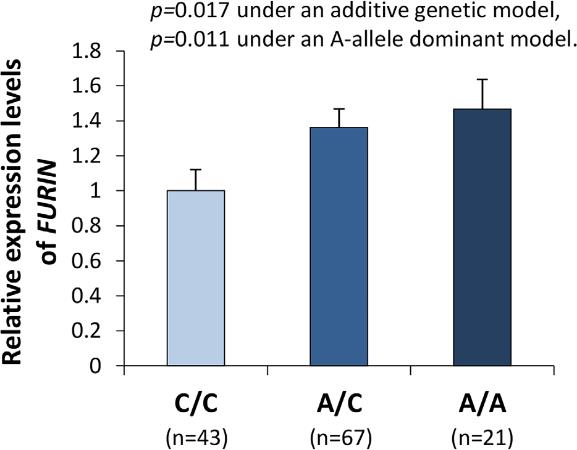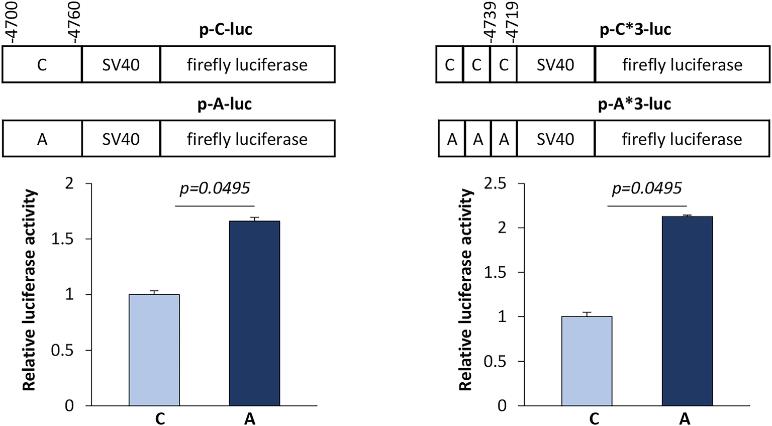Yang X. Journal of the American Heart Association. 2020 Feb 11;9(4):e014333.
A coronary artery disease (CAD) responsiveness is focused on chromosome 15q26.1, recognized by genome-wide association studies. At this focus, the A allele of the lead single-nucleotide polymorphism (SNP) rs17514846 which is positioned in the FURIN gene, is correlated with enhanced CAD risk. Endothelial cells (ECs), monocytes/macrophages, and smooth muscle cells express FURIN in human atherosclerotic plaques. rs17514846 regulates FURIN expression in monocytes and that levels of FURIN impact their migratory and proliferative potential, which may partly describe the correlation of rs17514846 with CAD risk. As ECs in atherosclerotic plaques also express FURIN and ECs play a vital role in atherogenesis, Thus, Yang X et al., conducted a study to analyse whether rs17514846 has an impact on FURIN expression in ECs and evaluated the impact of modified FURIN expression on EC functional behaviour.
Bioinformatics analysis of the genomic region containing rs17514846 was executed. A collection of ECs was genotyped from different individuals (n=131) for rs17514846 to ascertain if there was an allelic/genotypic impact of rs17514846 on FURIN expression in ECs and executed reverse transcription – polymerase chain reaction evaluation to measure FURIN expression levels in the cells. A luciferase reporter assay method analysed whether rs17514846 can directly alter gene expression, having detected a correlation among rs17514846 genotype and FURIN expression in ECs. Cultured ECs were transfected with a firefly luciferase reporter plasmid containing either the A or C alleles of rs17514846, together with a Renilla luciferase plasmid to act as a transfection efficiency control. An electrophoretic mobility shift assay was executed with EC nuclear protein extracts to analyse if there was a difference among the 2 alleles of rs17514846 in nuclear protein binding. The level of FURIN in ECs either had an impact on monocyte-endothelial adhesion and monocyte transendothelial migration was further evaluated.
Quantitative reverse transcription–polymerase chain reaction examination exhibited that cultured vascular ECs from individuals conveying the coronary artery disease risk allele of rs17514846 had greater FURIN expression as compared to cells from non-carriers. (Figure 1)

Figure 1: Influence of rs17514846 genotype on FURIN expression in vascular endothelial cells
The risk allele had greater transcriptional activity in ECs as compared to the nonrisk allele in the luciferase reporter analyses. The A allele has higher strength in driving gene expression than the C allele as cells transfected with the A allele plasmid had substantially greater firefly luciferase levels than C allele plasmid transfectants. (Figure 2)

Figure 2: Effects of rs17514846 on gene transcription regulation
A DNA-protein complex was detected with allelespecific differential binding of a nuclear protein in electrophoretic mobility shift assays using EC nuclear protein extracts. The C allele has higher compatibility for binding of nuclear proteins than the A allele. (Figure 3)

Figure 3: Allele-specific effect of rs17514846 on nuclear protein binding
Knockdown of FURIN decreased endothelin-1 secretion, nuclear factor-jB activity, vascular cell adhesion molecule-1, and MCP1 expression and monocyte-endothelial adherence and transmigration in ECs. (Figure 4)

Figure 4: Effects of FURIN knockdown endothelin-1 (ET1) secretion, nuclear factor (NF) jB activity, and MCP1 (monocyte chemotactic protein-1) expression in vascular endothelial cells
Thus, it was concluded that the coronary artery disease risk variant at the 15q26.1 focus regulates FURIN expression in vascular ECs. FURIN levels impact monocyte-endothelial adherence and migration in ECs.
FURIN: FES Upstream Region; MCP1: Monocyte chemotactic protein-1

